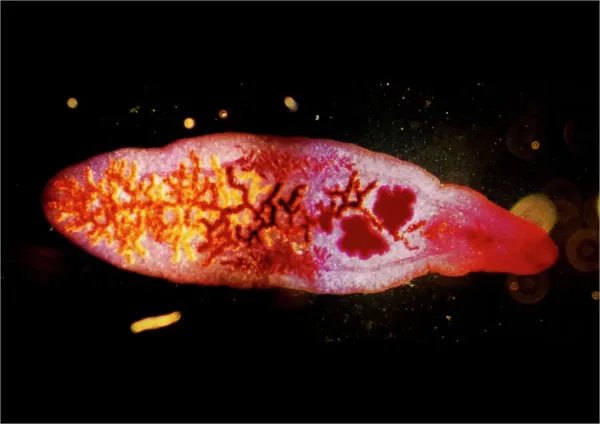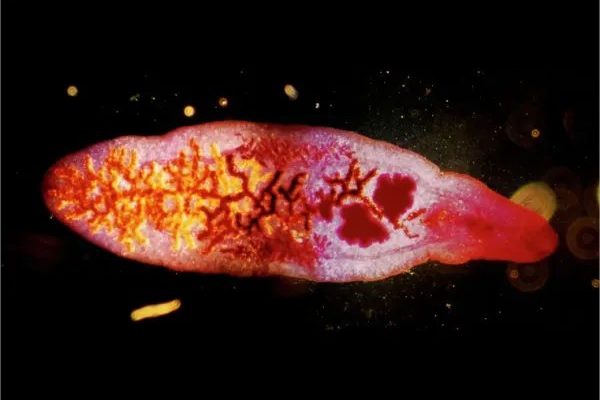
Field cameras, like the popular Bushnell Trophy Cam, are designed to capture high-quality images and videos in natural settings without human interference. They’re super handy tools for researchers who want to observe wildlife and, in this case, the elusive liver fluke in its natural habitat. By documenting their behavior, we can learn vital information about their life cycle, feeding patterns, and even their mating rituals.
What Are Liver Flukes?
Liver flukes are parasitic flatworms that primarily affect the liver of various mammals, including cows, sheep, and, occasionally, humans. These creatures live in the bile ducts of their hosts and feed off their nutrients. To give you an idea, think of liver flukes as uninvited guests who just don’t know when to leave the party.
These parasites are notorious for causing significant health issues in livestock, leading to decreased productivity and weight loss. What’s interesting is that liver flukes have complex life cycles that involve multiple hosts, including snails, which makes observing them crucial for managing their spread.
You might be wondering why studying their behavior is important. Watching how liver flukes interact with their environment can provide insights into their survival strategies, how they evade the immune responses of their hosts, and even how we might control their populations through better livestock management.
Why Use Field Cameras for Observation?
Using field cameras to document the behavior of liver flukes is essential for several reasons. First off, it allows researchers to observe these creatures in their natural habitat without causing disturbance. Think of it like being a fly on the wall at a party – you get to see all the action without anyone noticing you. This undisturbed observation is crucial for collecting genuine data.
Field cameras can operate continuously, capturing images and videos day or night. This means researchers can document behaviors that might not occur during regular observation periods. For example, some behaviors related to mating or feeding might happen late at night when there’s less human activity.
The technology used in these cameras is also quite impressive. Many modern field cameras come with features like motion detection and infrared night vision. For instance, if you’re using a camera with a PIR (Passive Infrared Sensor), it can detect the warmth of the parasites or their hosts and snap a shot just when something moves. This smart feature helps ensure you’re getting the best footage possible without having to check in manually all the time.
Setting Up Your Field Camera
If you’re ready to dive into documenting liver fluke behavior, here’s how to set up your field camera effectively.
1. Choose the Right Location: Identify areas where you suspect liver flukes might be active. This could be near water bodies or grazing pastures where livestock are present.
2. Secure Your Camera: Mount the camera on a sturdy tripod or tree, ensuring it is aimed at the right spot. You want to maximize the angle of view to capture as much action as possible.
3. Adjust Settings: Before you leave the camera for a long time, make sure to adjust the settings for video or photo capture. Set it to a longer interval if you’re studying specific behaviors over a prolonged time.
4. Test Mode: Don’t forget to check the camera in test mode to ensure it’s working correctly. You want to make sure it captures anything that crosses its path.
Let’s not overlook the importance of battery life and memory storage. If your camera has low battery or limited storage, you might miss crucial moments. Always use new batteries and clear old photos to prevent this.
What To Look For While Observing
When monitoring liver flukes, there are several behaviors to keep an eye on. Here are some key activities that would be interesting to document:
- Feeding Strategies: Observe how liver flukes attach to their hosts and their feeding mechanisms. Are they more active at specific times?
- Mating Rituals: Document any signs of mating behavior. Do they congregate at certain locations?
- Responses to Environmental Changes: Watch how flukes react to changes in temperature or humidity, which can affect their activity levels.
- Interactions with Hosts: Look for how they evade the immune response of their hosts. Are there specific strategies at play?
By focusing on these behaviors, researchers can gain valuable insights into the life of liver flukes and better understand their role in the ecosystem.
Challenges in Documenting Liver Fluke Behavior
Despite the advantages of using field cameras, there are challenges in documenting liver fluke behavior effectively. Environmental factors can significantly impact the data collected. For instance, rain or extreme temperatures can affect the camera’s performance or the fluke’s activity levels.
Another challenge is ensuring that the camera is set up at the right height and angle. If it’s too high or angled improperly, you might miss the crucial moments you hoped to capture. Additionally, being in a remote area could make it harder to retrieve footage and check the camera frequently.
Moreover, identifying liver flukes in captured footage can be tricky. They are often small and blended into their environment. Researchers might need to rely on software or other post-processing techniques to analyze the recorded images effectively.
The Future of Research on Liver Flukes
As technology continues to evolve, the potential for researching liver flukes grows stronger. Innovations like AI and machine learning can be used to analyze footage captured by field cameras quickly. Imagine using a program that can recognize movements or behaviors in the footage automatically. This would save researchers countless hours of manual observation.
Additionally, integrating GPS technology can help track the movements of hosts, giving a fuller picture of liver fluke interactions. This kind of data could lead to better management strategies for controlling liver fluke populations, ultimately minimizing their impact on livestock health.
As researchers share their findings, this could also inform farmers and livestock managers about best practices to mitigate the health risks posed by liver flukes. It’s all about connecting the dots in the ecosystem, and every tiny bit of information counts.
In conclusion, documenting the behavior of liver fluke with field cameras opens up a fascinating window into the world of these tiny parasites. By carefully observing them in their natural settings, we can learn not just about their specific behaviors but also about how to manage their impact on livestock and agriculture. So whether you’re a researcher or just someone curious about the natural world, contributing to our understanding of liver flukes with the help of technology can be a rewarding journey.

